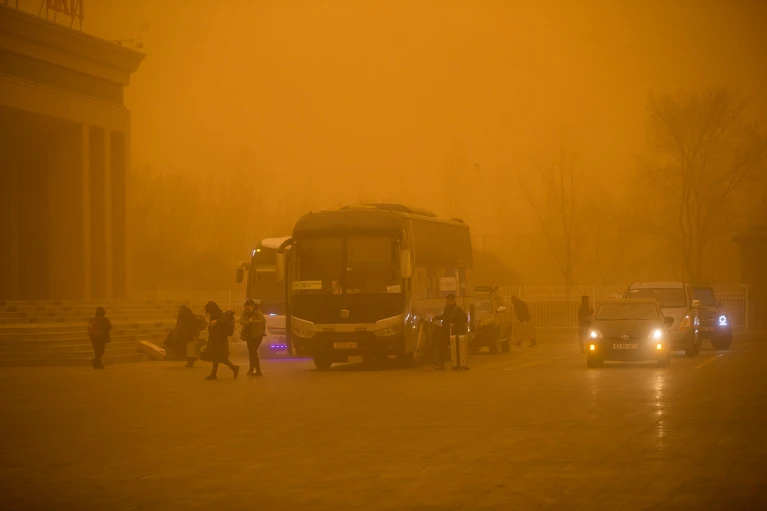As the Northern Hemisphere transitions into spring, many Asian nations are once again confronted with a recurring environmental challenge: dust storms. Recent reports from China’s Inner Mongolia region revealed how residents grappled with murky yellow skies and high winds, prompting warnings to stay indoors as visibility plummeted and dust swept across the landscape.
The phenomenon of dust storms, prevalent in regions like the Gobi Desert, poses significant risks to both human health and the environment. Dust storms occur when strong winds lift dust particles from dry areas, carrying them over vast distances and elevations. Besides reducing visibility and causing discomfort, dust storms can carry toxic particles and bacteria, contributing to respiratory and cardiovascular health issues.
In response to the annual threat, scientists in the region have been leveraging artificial intelligence (AI) and climate modeling to enhance predictions and mitigate the impact of dust storms. Researchers at institutions such as Lanzhou University in China have developed AI-driven forecasting systems, such as the “Dust Watcher,” capable of accurately predicting the timing and severity of incoming dust storms up to 12 hours in advance.
Dr. Chen Siyu, an atmospheric scientist at Lanzhou University, explains the potential of AI in predicting dust storms, stating that AI can learn from vast datasets to forecast the evolution of dust storms in time and space. The Dust Watcher system, in a trial run, demonstrated a 13% improvement in accuracy compared to non-AI models.
Despite advancements in forecasting, challenges persist, particularly in densely populated regions like East Asia, where dust storms originating from the Gobi Desert can affect millions. Researchers, including Dr. Jin Jianbing from Nanjing University of Information Science and Technology, have developed the Dust Assimilation and Prediction System (DAPS) to provide detailed forecasts covering multiple countries in East Asia.
While climate change has complex effects on dust storms, recent studies suggest that Arctic amplification may reduce dust levels in certain regions. However, the relationship between climate change and dust storms remains intricate and varies across different geographic areas.
Efforts to mitigate the impact of dust storms require international collaboration and comprehensive strategies, including anti-desertification initiatives such as tree planting and irrigation management. With the support of scientific research and concerted action, Asian countries aim to better predict and manage the annual challenge of dust storms, safeguarding public health and environmental well-being in the region.












